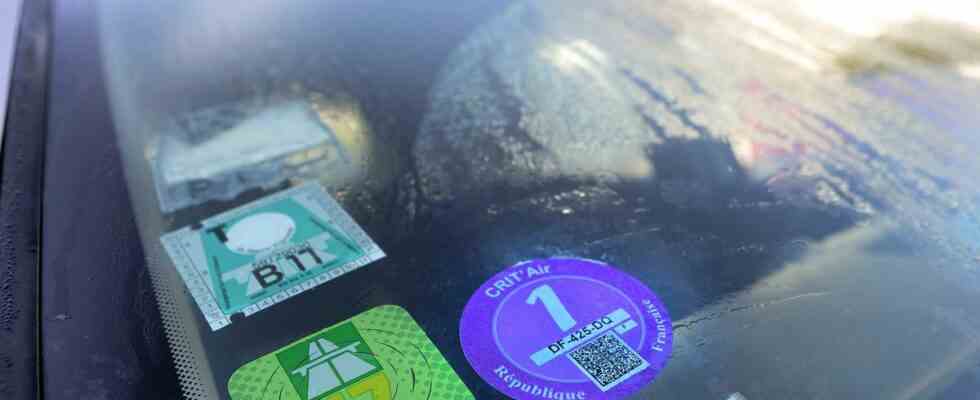From the second half of 2024, fines will be inflicted automatically excessively polluting vehicles prohibited in the agglomerations concerned by the ZFE, the low emission zones, announced on Tuesday the first ministerial committee for monitoring the low emission zones. Violators will face a fine “theoretically class 4”, or 750 euros maximum, said Christophe Béchu, the Minister of Ecological Transition. ZFEs already concern 11 French cities and must include 43 of at least 150,000 inhabitants by 2025. They aim to gradually ban the most polluting vehicles. So far, no sanctions were put in place.
Fines up to 750 euros
Asked about the installation of gates or cameras to carry out these checks, the Minister of Ecological Transition Christophe Béchu assured that the “technical characteristics of the selected projects will be presented when they are known”. Offenders will be liable to a “theoretically class 4” fine, i.e. a maximum of 750 euros, he specified.
“We are working on the implementation of an automated sanction control in the form of a radar which will be effective, available in the second half of the year 2024“, he also indicated. According to him, “this system by reading license plates will make it possible to integrate exemptions, since we will have the list of those who are concerned, it can be valid for emergency vehicles, it can be valid for people with disabilities “.
“Extra premium” extended to all the territories concerned
“The ZFE surcharge” for the purchase of a clean vehicle “will be possible in all ZFE territories”announced the Minister of Ecological Transition and Territorial Cohesion, Christophe Béchu. “Until now, this extra premium was reserved for intermunicipal authorities which set up a local bonus. We are removing the condition of reciprocity and the ZFE extra premium will be possible in all ZFE territories, for all the inhabitants of these ZFEs but also for people who work there, who will benefit from this bonus”, he explained. At the same time, a “working group devoted to questions of social accessibility” will be set up”so that at no time can we imagine that this imperative of public health, which is imperative, would have the vocation of restoring tolls or grants at the entrance to our metropolises, with the most fragile social exclusions..
“We have an overrepresentation of low-income households among those who own the most polluting vehicles”, he pointed out. Indeed, 38% of the most precarious households have a Crit’air 4 or 5 car, according to INSEE.
Help for households
To enable households to adapt, the government provides aid for the greening of vehicles. As announced by Emmanuel Macron at the Paris Motor Show
, the ecological bonus for the purchase of an electric vehicle will be increased from 6,000 to 7,000 euros for half of the poorest French people. The conversion bonus, which can go up to 5,000 euros, will be increased by 1,000 euros for inhabitants of ZFEs. Finally, the development of the zero-rate loan of up to 30,000 euros for the purchase of a new vehicle or leasing at 100 euros per month for an electric car from 2024, are also part of the aid put on the table. . “Together, all of these devices represent an incomparable effort in Europe”insisted Clément Beaune, the Minister Delegate for Transport. “1.2 billion will be devoted to the greening of vehicles in 2023”he specified.
EPZs in around ten cities
Currently imposed in a dozen cities, the ZFEs will extend to 43 agglomerations of more than 150,000 inhabitants by 2025. The main elected representatives of the agglomerations concerned participated in this monitoring committee. “With Clement Beaune [le ministre délégué chargé des Transports]we will meet twice a year this ZFE ministerial committee, it is the first of a series”, said Christophe Béchu. Local authorities have the choice of scope and possible derogations but must respect a progressive timetable of traffic bans if the air quality standards set at European level are exceeded. From January 1, 2023, Crit’Air 5 vehicles (diesel vehicles produced before 2001) will be affected. On January 1, 2024, it will be the turn of the Crit’Air 4 (diesel before 2006) then the Crit’Air 3 (diesel before 2011 and petrol before 2006) on January 1, 2025.
© Visactu

